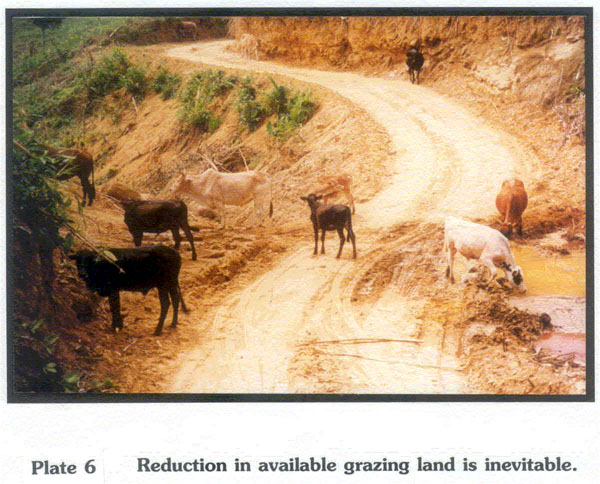Impacts of landtake
Landtake, both, by the project and induced development would bring about reduction in the quantities of available forest and natural resources that provide raw material for local industry. The loss of land resource is likely to aggravate the already unsustainable exploitation of resources from nearby areas. The acquisition of land for proposed development has a direct impact on certain land use practices of the area. The State has a high livestock number. The 1992 census of animals provide a figure of 95222 cattle heads. Lack of adequate fodder and pasture areas have lead to the conversion of most of the project area into grazing lands. The construction activities including cutting, felling, levelling and clear felling can completely alter the face of the land that was being used as grazing lands for decades (Plate 6). This change in landuse will obviously lead to spatial shifts in the boundaries of impacts resulting from the construction of proposed airport.

Diversion of land (that was earlier under jhum cultivation) subsequently for project related construction would place greater demands for alternative land area for assured crop output from jhum areas. This is likely to accelerate the destruction, more in areas that had been least impacted by biotic influences in the past.
There is also a possibility of further reduction of jhum cycle to maximise the crop output from smaller land parcels. The peripheral developments following the construction of airport is also likely to lead to a sprawl in peri-urban areas by the replacement of grazing land, jhum areas and natural wildlife habitats for urban growth. The resultant land use changes are likely to become unsustainable due to the intensity of landuse or landuse inappropriate to the environment.
The impact associated with overuse of land and other forest based resources is also likely to be induced by influx of labour from outside during construction phase of the project.
Last Updated: January 20, 2014









